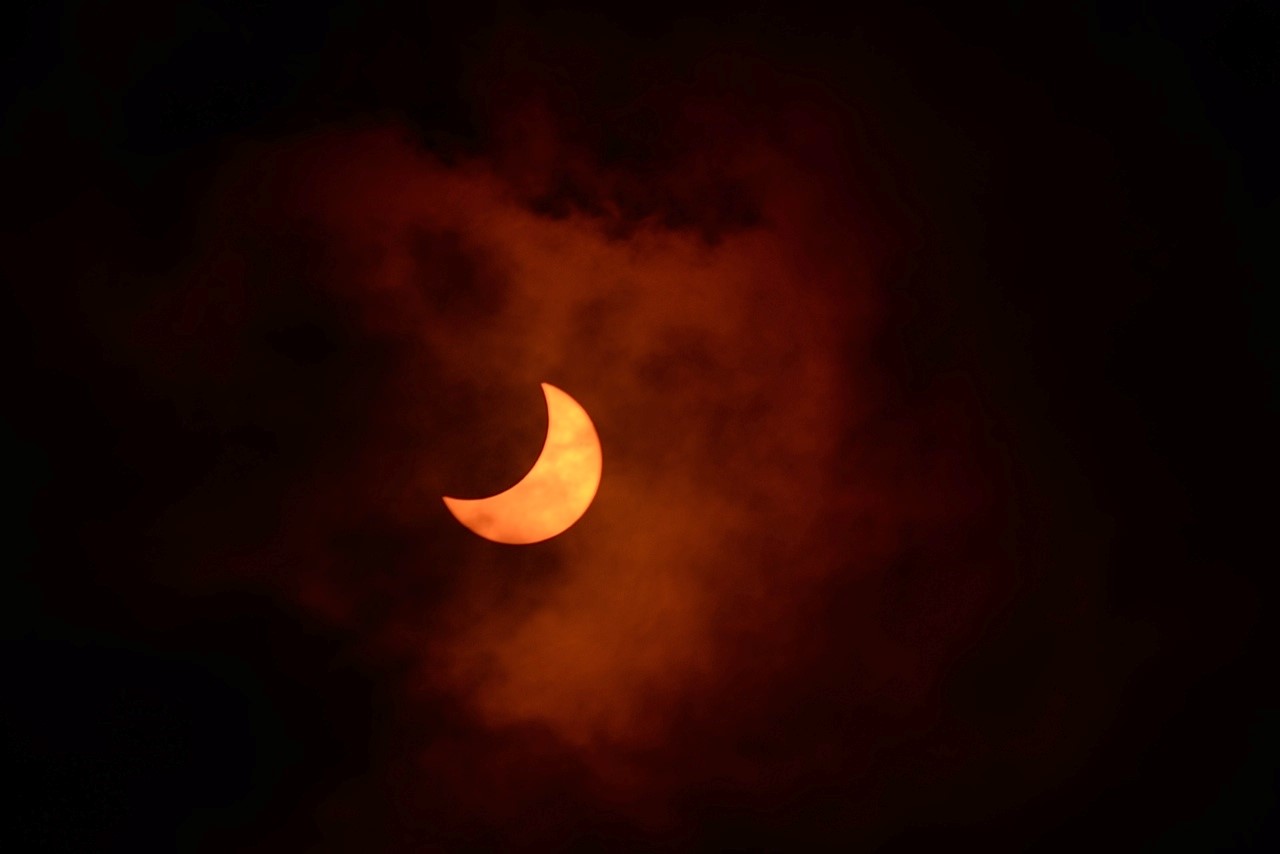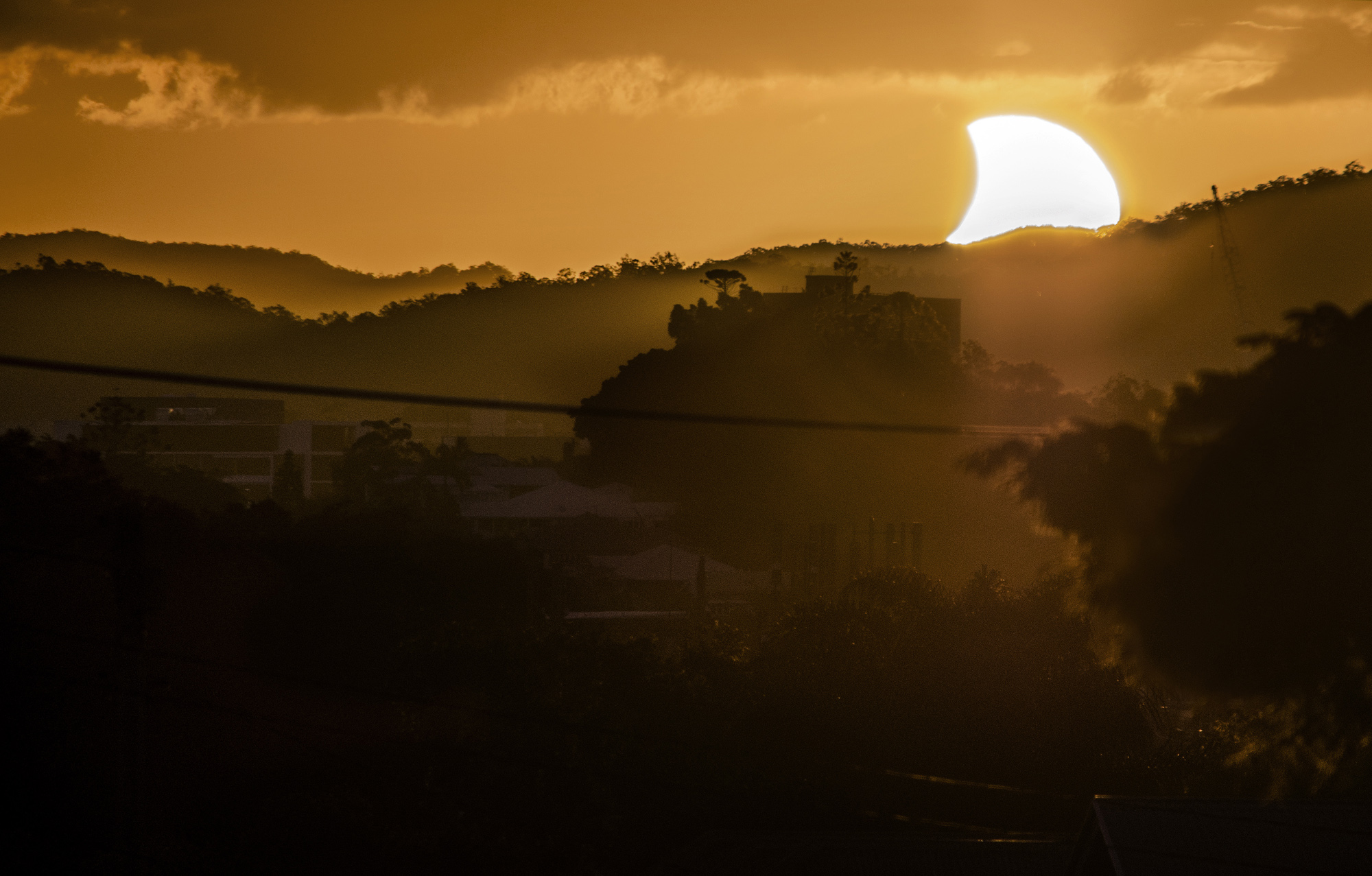First Solar Eclipse of 2014 Thrills Skywatchers in Australia (Photos)
The moon took a bite out of the sun in the first solar eclipse of the year on Tuesday (April 29), a celestial ballet visible from Australia that captivated stargazers despite cloudy weather.
Tuesday's solar eclipse was a "ring of fire" annular eclipse, but only for an uninhabited swath of Antarctica. For observers in Australia, the moon appeared to cover about 65 percent of the sun, resulting in a striking partial solar eclipse at sunset.
"I felt lucky to view and capture the eclipse this afternoon due to continuous partial cloud cover," photographer CJ Armitage told Space.com via email after snapping a spectacular view of the eclipsed setting sun. "Time seemed to stand still during the brief moments of visibility while I wanted in awe of this natural phenomenon. I hope the penguins of Antarctica enjoyed their view of the 'Ring of Fire.'" [Amazing Photos of the April 29 Solar Eclipse (Gallery)]
Australian eclipse-chasers dealt with frustrating clouds that occasionally blocked views of the moon-sun rendezvous. The clouds did not stop U.S. astronomer Jay Pasachoff of Williams College in Williamstown, Mass., who photographed the solar eclipse from Albany in Western Australia with a Nikon D610 camera and a 500 mm lens.
"Things went very well here," Pasachoff told Space.com via email. "Clear about half the time. Enough to see all the range of phases up to 65-percent [obscured]." Tuesday's sun show was the 59th solar eclipse observed by Pasachoff.
A live video feed from the Sydney Observatory in Sydney was quickly clouded out, though the U.S.-based Slooh community telescope did see much of the eclipse via a telescope view provided by Gerard Lazarus in Newcastle, Australia.
"The moon looks like a dark piece of coal," Slooh astronomer Bob Berman said during the group's webcast.
Breaking space news, the latest updates on rocket launches, skywatching events and more!
The Perth Observatory in Western Australia also streamed live views of Tuesday's solar eclipse, with photographers located across Australia feeding striking views of the eclipse to the online Virtual Telescope Project in Ceccano, Italy.
"It's great to see that our collaborators are so willing to share their experiences with us, even under less than ideal weather," astrophysicist Gianluca Masi said during the Virtual Telescope Project webcast. "This is just fantastic."
Tuesday's eclipse of the sun was the first of two solar eclipses in 2014, with the second event occurring on Oct. 23. That October event will be visible primarily from Canada and the United States. Tuesday's event also came on the heels of a total lunar eclipse on April 15. The next moon eclipse will be a total lunar eclipse on Oct. 8.
Editor's Note: If you live along the visibility path and snapped an amazing picture of the April 29 solar eclipse, you can send photos, comments, and your name and location to managing editor Tariq Malik at spacephotos@space.com.
Email Tariq Malik at tmalik@space.com or follow him @tariqjmalik and Google+. Follow us @Spacedotcom, Facebook and Google+. Original article on Space.com.

Tariq is the award-winning Editor-in-Chief of Space.com and joined the team in 2001. He covers human spaceflight, as well as skywatching and entertainment. He became Space.com's Editor-in-Chief in 2019. Before joining Space.com, Tariq was a staff reporter for The Los Angeles Times covering education and city beats in La Habra, Fullerton and Huntington Beach. He's a recipient of the 2022 Harry Kolcum Award for excellence in space reporting and the 2025 Space Pioneer Award from the National Space Society. He is an Eagle Scout and Space Camp alum with journalism degrees from the USC and NYU. You can find Tariq at Space.com and as the co-host to the This Week In Space podcast on the TWiT network. To see his latest project, you can follow Tariq on Twitter @tariqjmalik.



